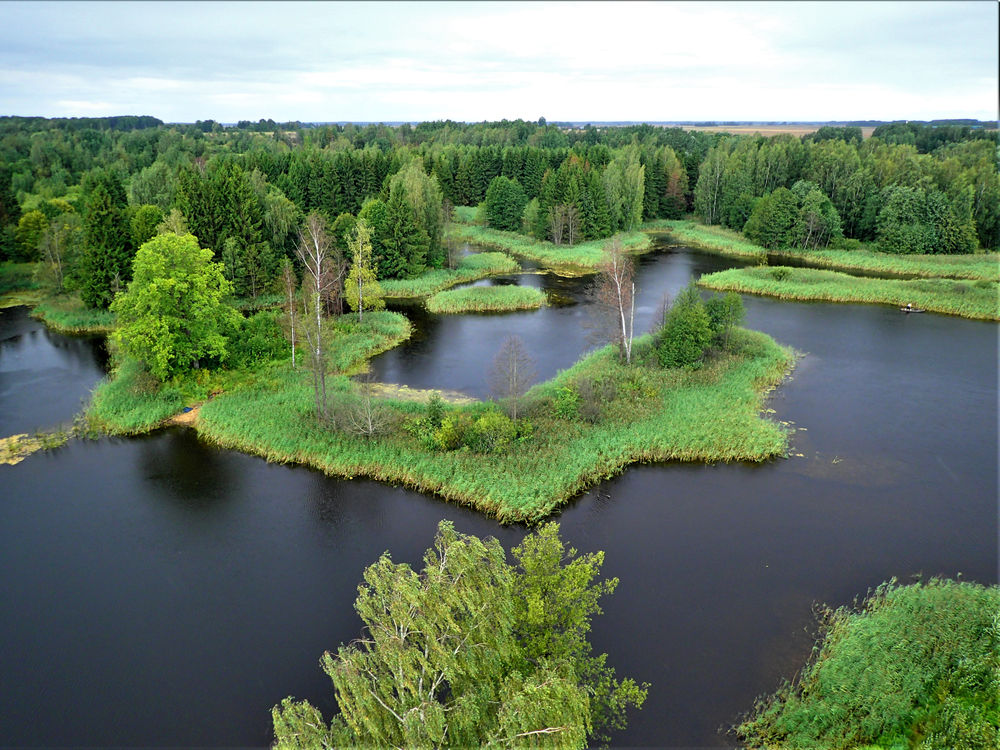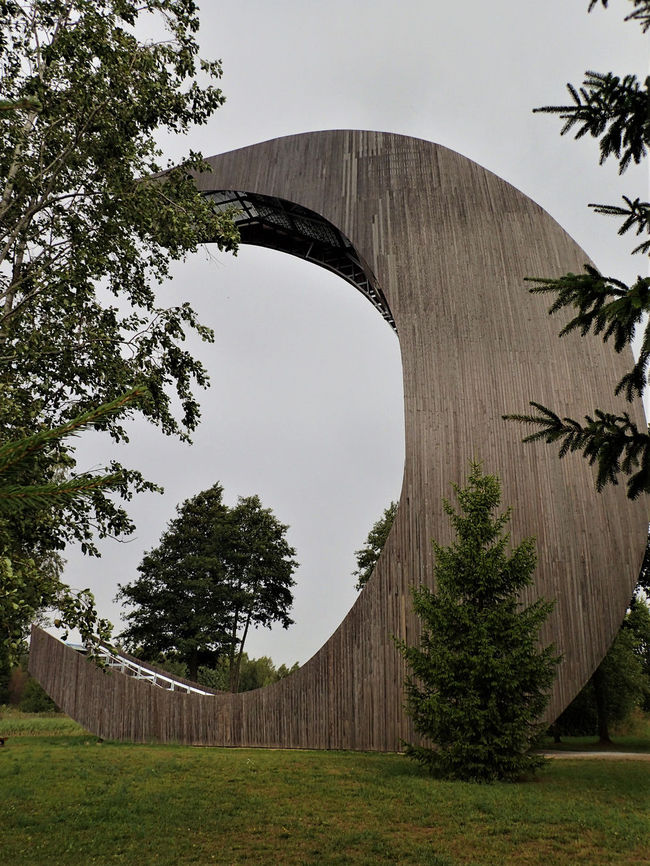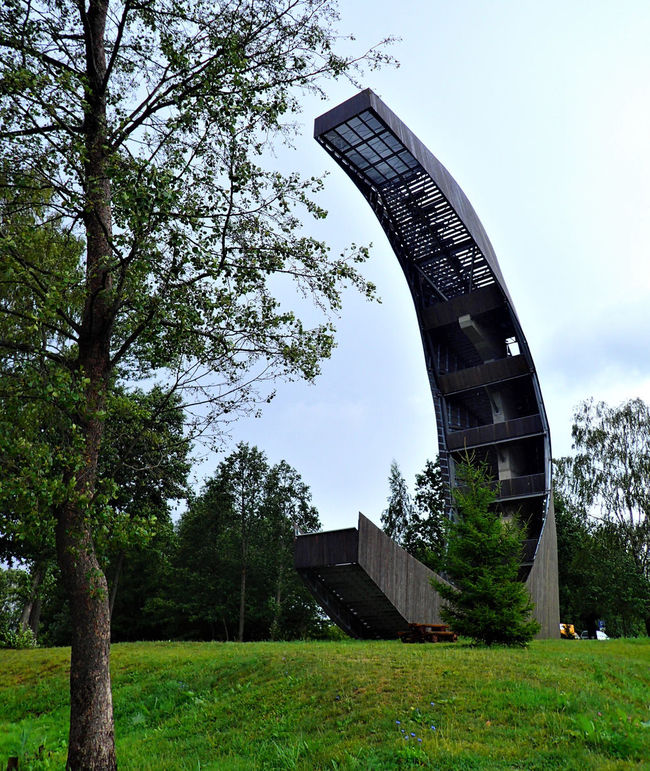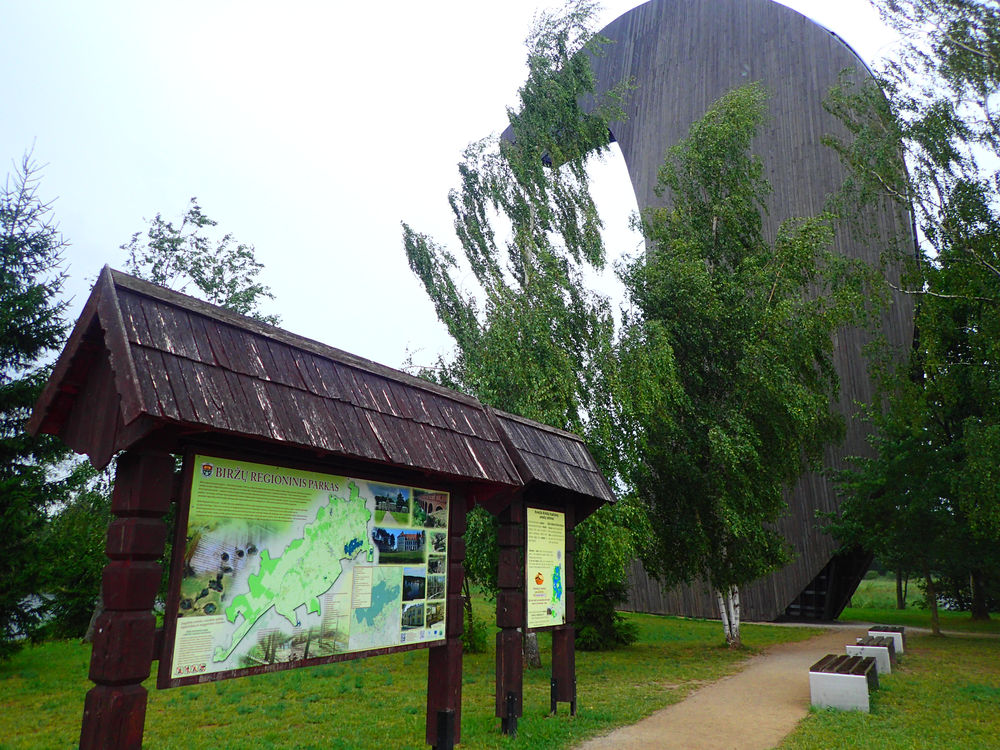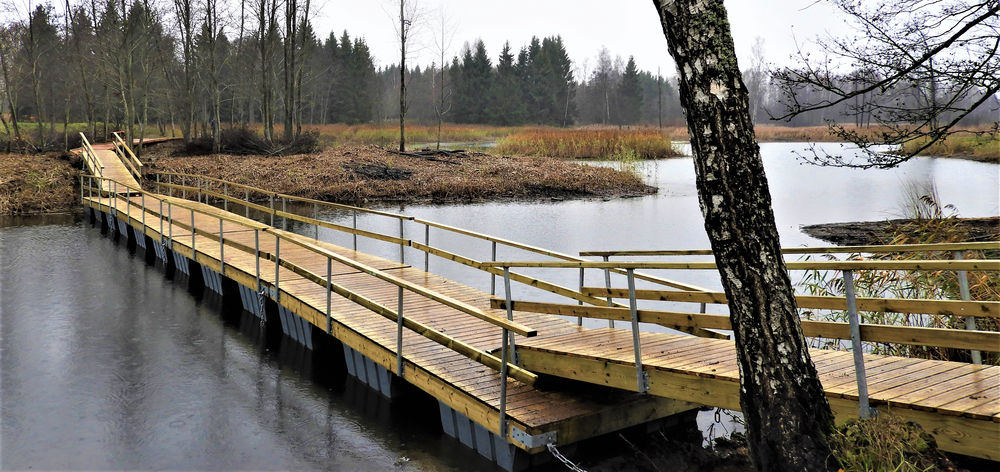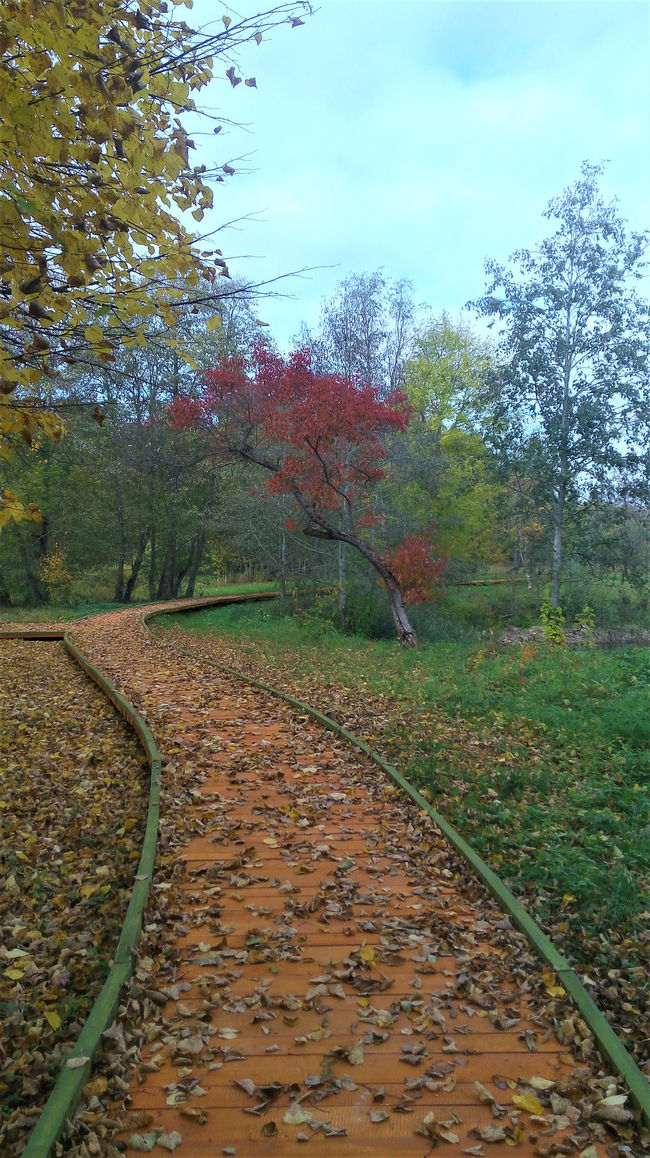Trail in Kirkilai Landscape Reserve
Nature trails, Audio info available, Accessible to parents with baby-strollers, Partly accessible
Object list
Watch the trail video:
Description:
The trail offers to see the Kirkilai lakes and the unusual landscape of this area. This area is affected by karst processes. Here, and throughout all the karst area, gypsum layers melt and form the underground voids. Earth surface layer above them then falls in, turning into different size and shape karst ravines. They are commonly referred to as sinkholes, subsidence, slumps. Karst processes change the surface, deforms it and creates a unique landscape. When water fulfils the sinkholes, they become the karst origin lakes.
The largest karst lake in Lithuania is the Kirkilai or Long lake, it spans for 3,9 ha. The lake consists of 25 water sinkholes, merged among each other. The maximum depth of the lake is 6,3 m, the maximum width – about 120 m and the length – 410 m. During the dry period lake water level decreases. Then some of the lake forming sinkholes turn into separate lakes, which merge again after rainier season or year. The karst lakes are particularly attractive due to winding shores, picturesque peninsulas, isthmuses, lay-bys and islands. Kirkilai lakes are the unique landscape element, being the only one of this kind in the Baltic states. Due to the particular hydrological and hydrochemical conditions of those lakes fauna and flora is very distinctive here. There are 46 species of zooplankton found in karst lakes. The water is rich with sulphate-reducing sulphur bacteria, which purple stocks can sometimes be seen with a naked eye. Due to this, the lakes are included in the European Union Ecological Network of Protected Areas Natura 2000.
Accessibility
Part of the trail is accessible to wheelchair users with an assistant. Getting onto the lake boardwalk to accomplish the trail loop-type in its entire lenght might be challenging because of the steep pontoon blocks to get onto the footbridge.
Facilities
Dry toilet is not accessible. Closest accessible WC – at Biržai Regional Park Visitor Centre and Biržai Tourism Info Centre. Watching tower is not accessible to wheelchair users.
Rules to follow
Download the GPX of the trail
In order to open the GPX file with the trail route on a mobile phone or computer, please install one of the hiking apps or maps, e.g., Wikiloc, Outdooractive, ViewRanger, OS Maps or any other GPX file reading programme or application.
6 Photos
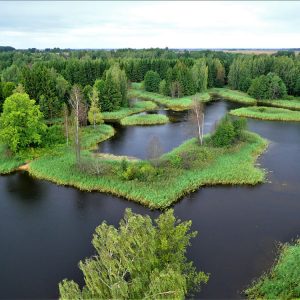
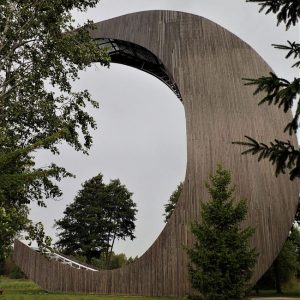
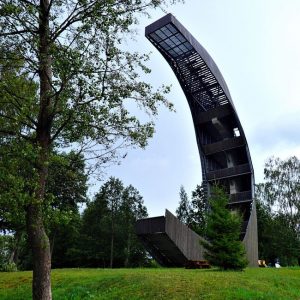
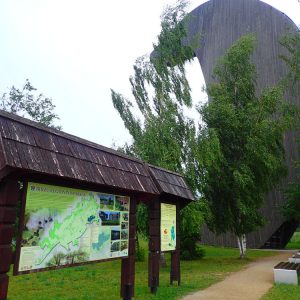
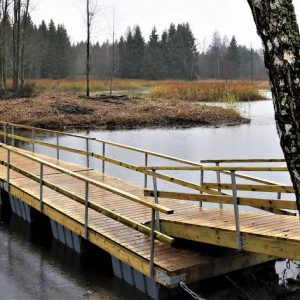
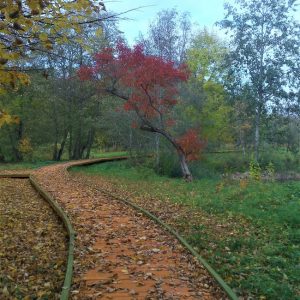
Watch the trail video:
Description:
The trail offers to see the Kirkilai lakes and the unusual landscape of this area. This area is affected by karst processes. Here, and throughout all the karst area, gypsum layers melt and form the underground voids. Earth surface layer above them then falls in, turning into different size and shape karst ravines. They are commonly referred to as sinkholes, subsidence, slumps. Karst processes change the surface, deforms it and creates a unique landscape. When water fulfils the sinkholes, they become the karst origin lakes.
The largest karst lake in Lithuania is the Kirkilai or Long lake, it spans for 3,9 ha. The lake consists of 25 water sinkholes, merged among each other. The maximum depth of the lake is 6,3 m, the maximum width – about 120 m and the length – 410 m. During the dry period lake water level decreases. Then some of the lake forming sinkholes turn into separate lakes, which merge again after rainier season or year. The karst lakes are particularly attractive due to winding shores, picturesque peninsulas, isthmuses, lay-bys and islands. Kirkilai lakes are the unique landscape element, being the only one of this kind in the Baltic states. Due to the particular hydrological and hydrochemical conditions of those lakes fauna and flora is very distinctive here. There are 46 species of zooplankton found in karst lakes. The water is rich with sulphate-reducing sulphur bacteria, which purple stocks can sometimes be seen with a naked eye. Due to this, the lakes are included in the European Union Ecological Network of Protected Areas Natura 2000.
Accessibility
Part of the trail is accessible to wheelchair users with an assistant. Getting onto the lake boardwalk to accomplish the trail loop-type in its entire lenght might be challenging because of the steep pontoon blocks to get onto the footbridge.
Facilities
Dry toilet is not accessible. Closest accessible WC – at Biržai Regional Park Visitor Centre and Biržai Tourism Info Centre. Watching tower is not accessible to wheelchair users.
Rules to follow
Download the GPX of the trail
In order to open the GPX file with the trail route on a mobile phone or computer, please install one of the hiking apps or maps, e.g., Wikiloc, Outdooractive, ViewRanger, OS Maps or any other GPX file reading programme or application.
6 Photos






